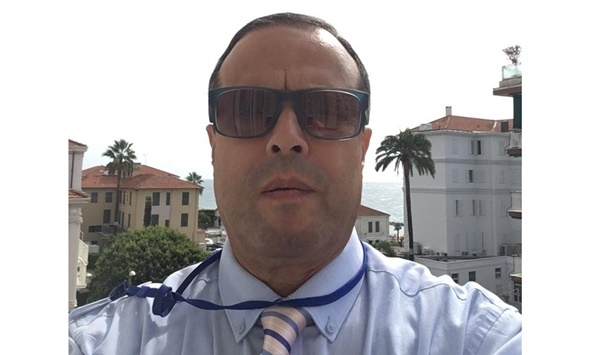HE the Minister of Culture Sheikh Abdulrahman bin Hamad al-Thani, HE the Minister of Municipality Dr Abdullah bin Abdulaziz bin Turki al-Subaie, and HE the Minister of Social Development and Family Maryam bint Ali bin Nasser al-Misnad attended the Ramadan Majlis seminar Sunday.
The seminar in the evening was held as part of the activities accompanying the ongoing Ramadan Book Fair.
Leading architect Ibrahim Mohamed Jaidah was the speaker at the seminar moderated by journalist Jassim Salman.
Jaidah spoke about his educational journey, the challenges, as well as his residence in the Al Jasra area near Souq Waqif, which formed his idea about authentic Qatari style.
He studied in the UK, where he got acquainted with different civilisations, followed by his studies in architecture in the US, where he noticed a lack of understanding of Islamic architecture.
Jaidah returned to Doha in 1988 and, while working at the Ministry of Municipality, grew fond of taking photographs of mud buildings and writing books about them.
His fondness for design prompted him to make a sketch for Al Dana Club, while his passion for architecture led him to dedicate his career to studying the rich Qatari style, indicating that the old National Museum is a reference for the Qatari architectural style.
He said that the Gulf style stopped with the refining of oil and the emergence of modernity, but he was keen to employ it in different buildings as it evoked authentic Qatari architecture.
After working in the ministry for four years, Jaidah left for the private sector with the aim of preserving old architecture.
The architect said that he had a dream of restoring the Qatari architectural style, blending it with modernity, and accordingly he devoted his efforts to achieving this by forming a team.
He said that that a global architectural boom appeared with Qatar Museums through contact with international architects, who accomplished works inspired by the Qatari environment and style, as evidenced with the Museum of Islamic Art and the National Museum of Qatar, until the country became a model of modern Islamic architecture.
Jaidah praised the architectural experience in Msheireb, which took into account the nature of the climate in its implementation, and was the most beautiful expression of the elements of Qatari architecture.
The architect said that he dreams of “establishing a freej” (Arabic for a small neighbourhood) that carries the elements of Qatari architecture “in a way that preserves our identity after the absence of many elements as a result of modernity”.
He also referred to “the absence of the liwan, i.e. the courtyard, in modern architecture”, and how the door became isolated from what was behind it.
“We need our neighbours ... let’s return these features to our Qatari architecture,” he said.
Jaidah also touched upon the most important stage in his career, which is designing Al Thumama Stadium, one of the venues of the FIFA World Cup Qatar 2022.
Architects from around the world were invited to submit designs inspired by the gahfiya – a traditional headpiece worn by men across the Arab world – for the stadium.
“I received a call telling me about my nomination to participate with a group of international architects to design a stadium with details from our Qatari environment,” he recounted.
“I could not sleep that night, and went to Souq Waqif in the morning to buy all kinds of gahfiyas, from which I was inspired,” the architect said.
“At that time I had a great determination to win the competition, especially since I know our gahfiya better than foreigners, for whom it is considered strange and unfamiliar,” Jaidah added.
“I focused on the external appearance, given that I had no prior experience of designing stadiums, but with the help of a team of consultants, we were able to present the best design that won the confidence of officials,” he said.
“From this standpoint, we affirm that we can design in a modern way, but at the same time carry the mark of history and embody our heritage, which is what we seek to achieve and impart to future generations of Qatari women architects who graduate from Qatari universities,” he concluded.

Ibrahim Mohamed Jaidah

Dignitaries at the seminar.

